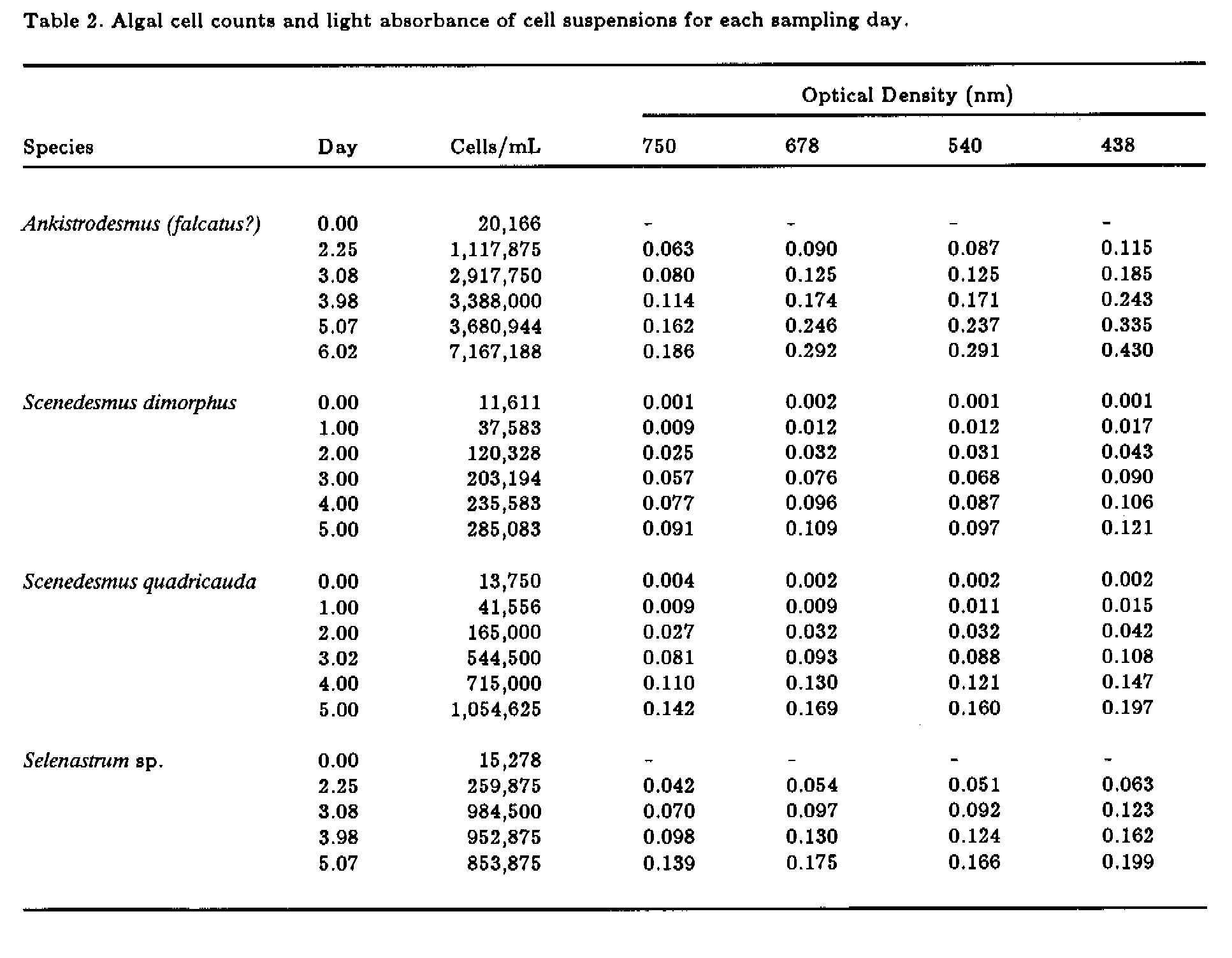
| MadSci Network: Cell Biology |
Interestingly, I just recently answered another very similar question re: using a spectrophotometer to measure algal growth. In that case, they were more concerned w/ comparing algal growth rates rather than measuring the actual algae concentration, however. It is much easier to simply use increasing optical density at 550 nm as a measure of growth rate than to measure the actual algal concentration.
To accurately convert optical density (OD) to the corresponding algal concentration, it's necessary to find the cell count from a culture of a particular OD. This is especially critical for unusually shaped cells, such as the elongated Ankistrodesmus algae in which you're interested. It must also be done at several different optical densities to get a standard curve for conversion, since it's not strictly a linear relationship. This requires counting of the algae either grown as colonies on culture plates or microscopically. Unfortunately, neither of these methods is particularly quick or easy for a high school student. There's at least 1 higher-tech spectrophotometer, the Biochrom WPA Biowave II, that offers built-in cell density conversion, but it would not be as accurate and is also probably not an option for you as a high school student.
Nevertheless, I was able to locate the following table in a report from Australia's version of the EPA on the Isolation and culture of five species of freshwater algae from the Alligators River Region, Northern Territory, which includes some OD vs. cells/mL data for Ankistrodesmus at several wavelengths:

It's not a complete standard curve under your exact culture conditions, but it might be good enough for your purposes. The absorbance doesn't seem to depend on wavelength very much, so let's look at their data for 540 nm, since that's close to the wavelength I've used for blue-green algae (550 nm). Their optical densities are all <0.4, which is great because absorbance is closest to a linear response w/ respect to cell concentration in that range. If we calculate the cells/mLˇ OD540 in the range of 0.1 - 0.3, we get ~2x107. This can be used as a conversion factor to calculate the approximate concentration of Ankistrodesmus as follows:
cells/mL = 2x107(OD540), for OD540 in the range of 0.1 to 0.3 or 0.4
Please feel free to calculate your own conversion factor, as you see fit. But at least you can hopefully see how the conversion is accomplished from this sample data.
My apologies for the complexity of this explanation, and best of luck w/ your project,
Jeff Buzby, Ph.D.
CHOC Research
Institute
Try the links in the MadSci Library for more information on Cell Biology.